Introduction:
Worldwide, three-quarters of the flowering plants need pollinators to reproduce and 35% of food crops depend on them too, which would be one out of every three bites of your food.1 The United States Department of Agriculture (USDA) lists the benefits of pollination which include seed propagation, maintenance of genetic diversity, production of oxygen, assistance in carbon cycling, sequestration of carbon, preventing erosion through roots, and the filtering of minerals, ammonia, nitrites, and nitrates from the water. Plants are incorporated into works of art, landscape, medicine, plant-based dyes, and pollinators have a cultural symbolism to some native people; for example, the Blackfoot Native Americans consider the butterflies messengers in dreams.2 Pollinators also provide services to humans; in 2005 the worldwide total economic value of pollinators was €153 billion, of which 9.5% was due to the value of the agricultural products intended for human ailments.3 Despite all the benefits that pollinators provide, wild bees have decreased by 23 % of their population from 2008 to 2013 in the US.4 On the other hand domestic bees, which are the principal pollinators of crops, had a total population loss of 35.8% worldwide between 2007 and 2008, which was 11.4% less than the 2006 report.5 The decline of both managed and wild pollinators are due to pathogens, parasites, and pesticides, loss and fragmentation of habitats, market forces, competition with native and exotic species, climate change, and genetic modifications.6 So, we know that exotic species are a factor in the pollinator’s decline, and an example of it is the competition for resources or direct interaction: in the USA, a 90% overlap in plant use was found between the exotic species Apis mellifera and native Bombus species, which also causes a decline in floral biodiversity.7 Not all exotic species would cause harm though, based on the order 13112, the EPA explains that a specie that causes economic, environmental, or human health harm, and has a rapid establishment is called an invasive specie, so they can be either nonnative or native the ones that cause harm and becomes invasive but most invasive species are nonnative, with a fewer percentage of nonnative.8 Following the study of 36 experts in biological invasions, in the mid 21 century moderate (20%–30%) increases in invasive species, compared to the current conditions, are expected to cause great impacts on biodiversity in most socioecological contexts.9 In general, biodiversity helps ecosystem stability, making it more resilient to perturbations10, and pollinators in particular are beneficial to natural and agricultural ecosystems in terms of ecosystem stability. Pollinator biodiversity is useful for monitoring environmental pollution, aiding in pest and disease control, and providing cultural and aesthetic value.11 Most of the studies on pollinator decline have focused on the agricultural factor because of their impact on crop productivity 12, but the study of pollinators’ biodiversity in an urban setting has been less studied. An urban ecosystem represents opportunities for different interactions in an agricultural or natural ecosystem; decreased pollinator biodiversity has been documented in urban systems in comparison to the natural ecosystem, but increased in comparison with agricultural ecosystems.13 An important type of area found in Urban environments are the green infrastructures, which is defined as the range of measures that use plant or soil systems, permeable pavement, or other permeable surfaces or substrates, that are used for landscape and/or infiltrate, or evapotranspiration stormwater; some examples are green alleys, a row of trees along a major city street, rain gardens, or acres of open park space outside a city center. 14 They are considered a refuge for pollinators, but as in the urban ecosystem, very little research has been conducted on the impact of green infrastructures on plant and animal pollinator populations.15 San Antonio is an example of an area that has undergone rapid urbanization, during which there was a decline in local pollinators; for example, the total Monarch butterfly population decreased by between 22% and 72% over the past decade 16, and the American bumble bee abundance decreased by 88.56%.17
An ecoregion is an area where ecosystems are generally similar,105 are found in the continental United States and from those 3 of them converge in the Bexar county: the Texas Blackland Prairies, the East Central Texas Plains, and the Edwards Plateau; San Antonio is found in the Edward Plateau Ecoregion.18 The Edward Plateau Ecoregion has a large extended area of dissected limestone and hills to the South and East, and the Texas Park and Wildlife Department (TPWD) describes it as historically a grassland savannah, with grazing species like bison and antelope, and with frequent natural and man-made fires.19 Throughout the years since settlement, the overgrazing of the livestock brought by European colonizers and fire suppression drove the change of the native landscape to what we see today: the mid-grass and tall grass changed to short grass communities, and the grassland changed to park lands and woodlands.20 By the 1900´s the city boom in San Antonio took place, with an expansion of infrastructure and commerce that brought 53,321 people to the city.21 After all the changes in the land and population increase, San Antonio is now considered an urban center; in a 2014 final report by the Economic & Planning Systems, Inc and the Vickrey & Associates, Inc, it was shown that by 2014 the 1604 super subarea in San Antonio that consists of approximately 17,000 acres was 39% commercial, 46% residential, and 15% industrial, sectors that are also estimated to increase 10-30% by 2040.22 San Antonio can be described as an urban ecology system, which is an area with a high density of people or a great part covered by built infrastructure with the incorporation of planted vegetation like urban forests, parks and gardens, and water bodies like ponds, small lakes, and wetlands.23
Picture 1 Ecoregions of Texas
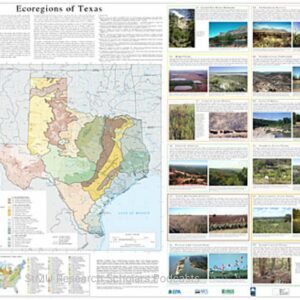
Hatch, S.L., and Bezanson, D., 2004, Ecoregions of Texas (color poster with map, descriptive text, and photographs):
Reston, Virginia, U.S. Geological Survey (map scale 1:2,500,000).
Because of the threat that exotic species could present to the local environment, the decline of native pollinators in San Antonio and the lack of information between pollinators and plant relationships in urban settings, the purpose of this research was to review the exotic plants currently found in San Antonio and determine how they may affect the local pollinator biodiversity.
Review of exotic plants in San Antonio
To find all the common exotic plants only located in San Antonio was not feasible, therefore the common exotic plants found in San Antonio were approximated to the area based on plants description from the Texas Department of Transportation (TxDOT) publication “Grass, Weed and Wildflower Guide”.24
Of the 157 plants listed in the guide, there are just 24 exotic plants that were introduced to areas in Texas and are common in the San Antonio district. Of those 24 plants, which is approximately 15% of the total number of exotic plants introduced to the state, 16 are grasses, 6 are weeds and 2 are wildflowers. The wildflower Silphium laciniatum is not native to the Edward Plateau ecoregion, but it is native to America. It has great value in attracting native bees25, like some species of bumble bees, miner bees, and large leaf-cutting bees, and it is also attractive to prairie songbirds.26 This wildflower could thrives in urban ecosystems, which normally have high salt levels27,and this wildflower thrives in salty growing conditions.28 The possible negative effect on the ecosystem of this plant is related to its tendency to form dense stands along ditches which then out-competes native species from growing.29
The other wildflower found that fulfills the criteria is the Trifolium incarnatum, native to southeastern Europe and southwestern Asia Minor. This wildflower is self-fertile but not self-pollinating, and it is heavily visited by various types of bees.30 Even so, this plant is listed in the“Invasive Plant Atlas of the United States” for which it is not native to any part of the U.S. and it could alter native plant communities.31 In Western Oregon, the Crimson Clover crops attracted some native bumble bees like Bombus vosnesenskii, B. nevadensis, B. melanopygus and B. appositus, but none of these are native to the Edward Plateau ecoregion so a conclusion as to the impact on pollinator biodiversity of this plant in San Antonio is unknown. For weeds, the Rumex Crispus is native to Africa, Asia, and Europe. It can inhabit a great number of habitats including grassland, agricultural areas, flood plains, ditches, roadsides, disturbed, unmanaged sites, and disturbed moist places; it does well in an urban area and reproduces primarily by seeds blown by wind and water.32 This plant is a source of food for several insects like butterflies or beetles, but due to its reproduction mechanism, it does not attract as many pollinators as other types of weeds. Nevertheless, weeds are recognized by various studies for their importance in their flowers’ use by pollinators.33 A study published by the MDPI in 2023 found that flora diversity of weeds increased beneficial insect abundance and diversity.34
Picture 2 Crimson Clover
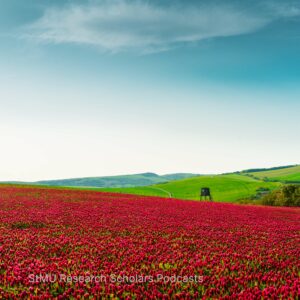
Around the 20th century, the mixed grassland in the San Antonio area was changed to brushland due to urbanization and changing land use practices.35 Grasses were the most abundant flora, but most of them were invasive and in addition to spreading quickly, were used for ornamental purposes, and they are normally managed as monocultures. Bermuda grass (Cynodon dactylon) is the most common turfgrass used in domestic lawns in the South region of the USA, including Texas and San Antonio. Bermuda grass, native to Africa and Asia, is the most commonly used turfgrass in the southern region of the United States,36 but at the same time is considered the world´s worst grass seed by the Sustainable Agriculture Research and Education (SARE). Bermuda grass reproduces by fragmentation, and it is wind pollinated and it does not attract pollinators. 37
Picture 3 Bermuda grass
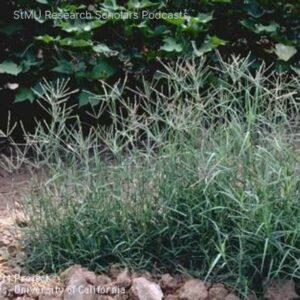
Like the Paspalum urvillei, Panicum coloratum and the Aspalum dilatatum , most of the grasses found in the guide are considered invasive. Grasses are normally invasive because of their intensive seed production, ability to thrive in areas that have been disturbed, widespread root systems that enable dense growth, and/or their use of chemical defenses to protect against neighboring plants, etc. Due to the natural grassland that historically characterized the Edward Plateau ecoregion, invasive exotic grass could be one of the most harmful to the native ecosystem because of its ability to directly compete with the native grasses.38
Conclusion
Identifying the full suite of plants that negatively affected pollinators, were grown in the urban landscape of San Antonio, and were exotic to the Edward Plateau ecoregion was not possible, although this research identified 24 common exotic plants that should be investigated further for their impact on pollinator biodiversity. Not all exotic plants affected the ecosystem biodiversity in similar ways; some were beneficial and others not, depending on the environment in which they were introduced. With all the urbanization taking place in the San Antonio landscape, the exotic plants were better able to thrive and tolerate the ecological variations in the environment, but they attracted fewer native pollinators and more exotic pollinators, like honeybees. In conclusion, not all exotic species are inherently harmful to San Antonio’s biodiversity and responsible for the decline of native pollinators, but they do cause a negative effect on the native biodiversity composition.
After conducting this research, I realized that in order to have a better understanding of what is the effect of nonnative species on pollinator biodiversity in an urban setting, further investigation with more data and a different procedure would be needed. The additional data should include a broader list of plants to have more accurate data, a more precise location of each plant to determine its abundance in the area, and more data about the connection between the study plants and the native pollinators affected by it.
Despite these unknowns, this research could help motivate other researchers to develop their own investigation of the same matter and as a rough explanation of the effects of nonnative species on native pollinators, mostly of the grasses family.
- USDA,“The Importance of Pollinators.”,n.d, Www.usda.gov. https://www.usda.gov/peoples-garden/pollinators. ↵
- US Forest Service,”Why Is Pollination Important?”December 12, 2022,https://www.fs.usda.gov/managing-land/wildflowers/pollinators/importance. ↵
- Gallai, Nicola, Jean-Michel Salles, Josef Settele, and Bernard E. Vaissière,“Economic Valuation of the Vulnerability of World Agriculture Confronted with Pollinator Decline.”,2009, Ecological Economics 68 (3): 810–21. https://doi.org/10.1016/j.ecolecon.2008.06.014. ↵
- Koh, Insu, Eric V. Lonsdorf, Neal M. Williams, Claire Brittain, Rufus Isaacs, Jason Gibbs, and Taylor H. Ricketts, “Modeling the Status, Trends, and Impacts of Wild Bee Abundance in the United States.”,2015, Proceedings of the National Academy of Sciences 113 (1): 140–45, https://doi.org/10.1073/pnas.1517685113. ↵
- vanEngelsdorp, Dennis, Jerry Hayes, Robyn M. Underwood, and Jeffery Pettis,“A Survey of Honey Bee Colony Losses in the U.S., Fall 2007 to Spring 2008.”,2008, Edited by Nick Gay. PLoS ONE 3 (12): e4071, https://doi.org/10.1371/journal.pone.0004071. ↵
- National Research Council, Division on Earth and Life Studies, Committee on the Status of Pollinators in North America, and Board on Agriculture and Natural Resources, Status of Pollinators in North America,2007, Vol. 3. Washington, D.C.: National Academies Press, https://doi.org/10.17226/11761 ↵
- Potts, Simon G., Jacobus C. Biesmeijer, Claire Kremen, Peter Neumann, Oliver Schweiger, and William E. Kunin,“Global Pollinator Declines: Trends, Impacts, and Drivers.”,2010, Trends in Ecology & Evolution 25 (6): 345–53,https://doi.org/10.1016/j.tree.2010.01.007. ↵
- US EPA. “Invasive Non-Native Species | US EPA,”,August 9, 2022, https://www.epa.gov/watershedacademy/invasive-non-native-species#:~:text=Invasive%20species%3A%20a%20species%20whose,common%20for%20non%2Dnative%20species. ↵
- Essl, Franz, Bernd Lenzner, Sven Bacher, Sarah Bailey, Cesar Capinha, Curtis Daehler, Stefan Dullinger, et al,“Drivers of Future Alien Species Impacts: An Expert‐Based Assessment.”,2020, Global Change Biology 26 (9): 4880–93. https://doi.org/10.1111/gcb.15199. ↵
- Loreau, Michel, and Claire de Mazancourt,“Biodiversity and Ecosystem Stability: A Synthesis of Underlying Mechanisms.”,2013,Edited by Emmett Duffy. Ecology Letters 16 (s1): 106–15. https://doi.org/10.1111/ele.12073. ↵
- Katumo, Daniel Mutavi, Huan Liang, Anne Christine Ochola, Min Lv, Qing-Feng Wang, and Chun-Feng Yang.“Pollinator Diversity Benefits Natural and Agricultural Ecosystems, Environmental Health, and Human Welfare.”,2022, Plant Diversity 44 (5): 429–435. https://doi.org/10.1016/j.pld.2022.01.005. ↵
- Katumo et al, Pollinators Diversity, 429-435. ↵
- Wenzel, Arne, Ingo Grass, Vasuki V. Belavadi, and Teja Tscharntke,“How Urbanization Is Driving Pollinator Diversity and Pollination – a Systematic Review.”,2019,Biological Conservation 241 (November): 108321,https://doi.org/10.1016/j.biocon.2019.108321. ↵
- US EPA. “What Is Green Infrastructure? | US EPA,”, March 13, 2023,https://www.epa.gov/green-infrastructure/what-green-infrastructure. ↵
- Wenzel et al, How Urbanization, Vol.241. ↵
- IUCN,“Migratory Monarch Butterfly Now Endangered – IUCN Red List.” IUCN,July 21, 2022. https://www.iucn.org/press-release/202207/migratory-monarch-butterfly-now-endangered-iucn-red-list. ↵
- Hatfield, Rich, Sheila Colla, Sarina Jepsen, Leif Richardson, Robbin Thorp, and Sarah Foltz, “± Corresponding Author: Rich@Xerces.org * the Xerces Society for Invertebrate Conservation, 628 NE Broadway, Suite 200, Portland, or 97232, Xerces.org † Wildlife Preservation Canada 5420 Side Road 6, Guelph, on N1H 6J2 CANADA Wildlifepreservation IUCN Assessments for North American Bombus Spp.”,2014, https://www.xerces.org/sites/default/files/publications/14-065.pdf. ↵
- Griffith, Glenn, Sandy Bryce, James Omernik, and Anne Rogers,“ECOREGIONS of TEXAS.”,2007,http://ecologicalregions.info/htm/pubs/TXeco_Jan08_v8_Cmprsd.pdf. ↵
- Jordan, Terry G. German Seed in Texas Soil,2010,The University of Texas Press. ↵
- Jordan, German Seed. ↵
- City of San Antonio,“Railroad Era and Industrial Development Narrative.”,n.d,https://www.sanantonio.gov/Mission-Trails/Prehistory-History/History-of-San-Antonio/Railroad-Era-and-Industrial-Development/Railroad-Era-and-Industrial-Development-Narrative. ↵
- Economic & Planning Systems, Inc., and Vickrey & Associates, Inc,“Comprehensive Plan Initial Studies Component 1: Land and Development Capacity Study .”,2014, Economic & Planning Systems: EPS,https://www.sanantonio.gov/Portals/0/Files/Planning/SA%20Tomorrow/Comprehensive%20Plan_Initial%20Studies_Component%201_Land%20and%20Development%20Capacity%20Study_Final%20Report.pdf?ver=2022-03-16-212029-740. ↵
- Verma, Pramit , Pardeep Singh, Rishikesh Singh, and A. Raghubanshi, eds,URBAN ECOLOGY : Emerging Patterns and Social Ecological Systems,2020, 1st ed. S.L.: Elsevier. ↵
- Texas Department of Transportation,“Gras, Weed and Wildflower Guide.”,2020,Austin, Texas: Texas. Department Of Transportation. https://ftp.dot.state.tx.us/pub/txdot-info/mnt/grass-wildflower-weed-guide.pdf. ↵
- Lady bird johnson wildflower center, “Lady Bird Johnson Wildflower Center – the University of Texas at Austin.”,2023, Www.wildflower.org. The University of Texas at Austin. 2023. https://www.wildflower.org/plants/result.php?id_plant=SILA3. ↵
- Singhurst, Jason.“Flora Fact: Compass Plant Serves as Prairie Navigator|April 2012| TPW Magazine.”,2012, Tpwmagazine.com. Texas Parks and Wildlife.https://tpwmagazine.com/archive/2012/apr/scout3_florafact_compassplant/. ↵
- Ombadi, Mohammed, and Charuleka Varadharajan, “Urbanization and Aridity Mediate Distinct Salinity Response to Floods in Rivers and Streams across the Contiguous United States.”, Water Research 220 (May 1, 2022): 118664,https://doi.org/10.1016/j.watres.2022.118664. ↵
- Possibility Place Nursery, “Silphium Laciniatum | Possibility Place Nursery.” ,Www.possibilityplace.com,Accessed April 22, 2023. https://www.possibilityplace.com/our-plants/silphium-laciniatum. ↵
- “Silphium Laciniatum | Possibility Place Nursery.”,Accessed April 22, 2023. ↵
- Young-Mathews, A, Plant guide for crimson clover (Trifolium incarnatum),2013,USDA-Natural Resources Conservation Service, Plant Materials Center, Corvallis, OR. ↵
- West Virginia Native Plant Society,Flora West Virginia Project, and West Virginia Curatorial Database System,September 3, 1999, https://wvdnr.gov/plants-animals/exotic-and-invasive-species/. ↵
- Anderson, N.P., S. Rao, and A.V. Derkatch. n.d. “NATIVE BUMBLE BEE DIVERSITY, ABUNDANCE, and POLLINATION in CRIMSON CLOVER and HAIRY VETCH SEED PRODUCTION FIELDS in WESTERN OREGON .”,Accessed April 22, 2023,https://agsci.oregonstate.edu/sites/agscid7/files/crop-soil/4-SR-11-16-Anderson-NativeBumbleBeeDiversity.pdf. ↵
- Balfour, Nicholas J., and Francis L. W. Ratnieks,“The Disproportionate Value of ‘Weeds’ to Pollinators and Biodiversity.”,2022,Journal of Applied Ecology 59 (5),https://doi.org/10.1111/1365-2664.14132. ↵
- Blaire Mallory Kleiman, and Suzanne Koptur,“Weeds Enhance Insect Diversity and Abundance and May Improve Soil Conditions in Mango Cultivation of South Florida.”,2023,Insects 14 (1): 65–65. ↵
- Jordan, German Seed. ↵
- Tips, Turf. “Common Bermudagrass.” Turfgrass Science at Purdue University,February 5, 2020,https://turf.purdue.edu/common-bermudagrass/. ↵
- Mohler, Charles L, John R Teasdale, and Antonio DiTommaso, Manage Weeds on Your Farm. Sustainable Agriculture Research and Education – SARE,2021, vol 2, pag.149. ↵
- Monaco, Thomas A, and Roger L Sheley, Invasive Plant Ecology and Management: Linking Processes to Practice. Wallingford, Oxfordshire; Cambridge, Ma: Cabi,2012. ↵
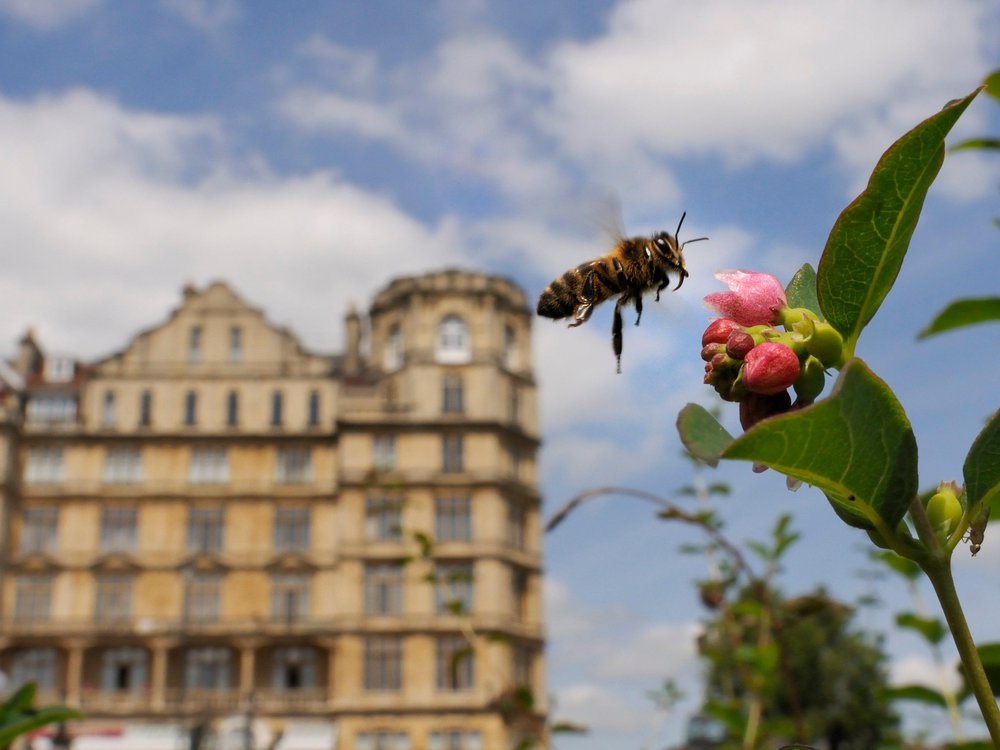

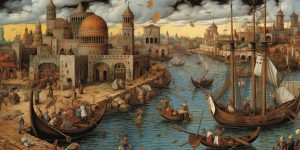
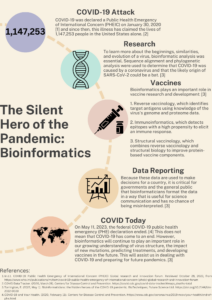
1 comment
Andrew Ponce
Jose, this article is amazing and incredibly interesting. Beginning with the composition of the article, the way in which this work was divided into subsections, make it very easy for the reader to navigate and understand what is being said and explain. The substance of the article itself also proved itself to be not only interesting, but meaningful. Very few people have as much passion for agriculture. This article emphasizes how important plants are, and how they are currently being affected. A lot of information within this published work. Great job!